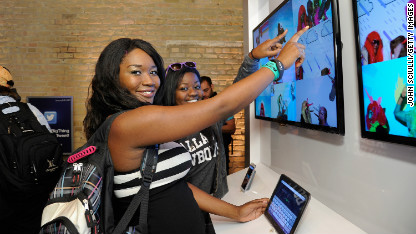
The techie fest known as South by Southwest Interactive has gotten so big that trends are hard to quantify. But it can be done. Here are five takeaways from the past five days.
Austin, Texas (CNN) — Hoopla surrounding South by Southwest Interactive, the techie festival that wrapped up here Tuesday, has exploded in recent years.
The event is famously known for helping to boost Twitter in 2007 and Foursquare three years later, giving it a rep as a launching pad for new digital tools. Fresh-faced startups converge on Austin, hoping to get venture capital and buzz. It’s one of the reasons attendance at SXSWi this week swelled to an all-time high of 30,621, up some 25% from last year.
It also has created big expectations. One of the most commonly asked questions among attendees here is, “What’s the coolest new thing you’ve seen?”
“That hype has been good for growth. But it’s also proved to be a double-edged sword,” said Hugh Forrest, director of the festival, in an interview here Tuesday. “People expect something to launch here Friday and be as big as Facebook by Sunday. There are things here that may not hit the mainstream for a couple of years, because they’re not fully developed.”
SXSW has gotten so big and diffuse that trends can be hard to quantify. But if you go to enough panels and talk to enough people, some themes start to emerge. Here are five takeaways from the past five days:
As digital tech went social and mobile, recent years at SXSWi have been all about social apps. Two years ago the buzzword was group messaging; last year it was “social discovery” apps such as Highlight, which let you know when people who share your interests are nearby.
But this week, SXSW has been acting a little more like CES, the annual electronics gadget show.
MakerBot, which makes desktop 3-D printers, made headlines by unveiling a device that scans small three-dimensional objects so they can be replicated in a printer. Also getting buzz was the tiny Memoto “life blogging” camera, which clips to a shirt or jacket and snaps a picture every 30 seconds; and the Leap Motion Controller, which plugs into a computer and lets users interact with the machine by waving their hand.
“We’ve had a much more hardware and gadget focus than we’ve had before,” said Forrest, who thinks the new wave of gadgets may catch on because of their simplicity of use.
Much of the talk at SXSWi was about uses for a gadget that wasn’t even officially shown here: Google Glass, the Internet-connected eyewear that Google expects to roll out later this year.


